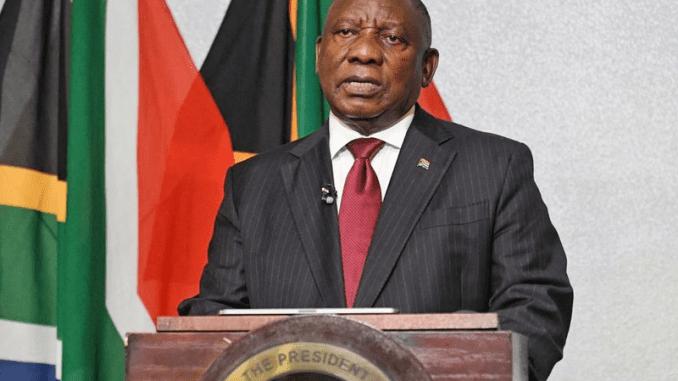
According to President Cyril Ramaphosa, the Energy Action Plan, which was unveiled in 2022, is paying dividends because load shedding has been absent from South Africa for more than six weeks.
Ramaphosa notes that it is premature to declare that load shedding has ended in his weekly letter, which was released on Monday morning.
“We have faith that load shedding will soon come to an end because of the steady improvement in the operation of Eskom’s power plants and the additional generation capacity we have added to our energy system.
“Results of Eskom’s redoubled attention on maintenance and the restart of several plants are now being seen. Between April 2023 and March 2024, losses from unplanned outages decreased by 9%, bringing 4,400MW of additional capacity to our national grid.
The nation’s Energy Availability Factor (EAF), or the quantity of electricity available from our power plants at any given time, has improved thanks to better-maintained and more dependable power plants. Since April, the EAF has risen beyond 60%, compared to 53% during the same period in the previous year.”
Ramaphosa went on to say that there is a genuine trend toward better plant performance indicated by the stabilization of electricity availability and the decline in failures.
“However, others have asserted that the decreased load shedding is a political tactic before of the elections, despite all the evidence to the contrary. Some have theorized that Eskom is employing the diesel-fueled peaking plants to “keep the lights on” in the lead-up to the elections, which explains why there is less load shedding.
“The facts do not support this. In actuality, Eskom is operating these peaking plants far less frequently than it did in the previous two years. For instance, compared to April 2023, Eskom spent more than half as much on diesel last month.
Our achievement in adding new generation capacity, primarily from renewable energy sources, is another important factor contributing to the decrease in load shedding.
“Removing the licensing threshold for new power generation projects has led to significant private investment in the energy sector.”
In a letter, the President stated that over 130 private energy projects totaling over 22,500 MW of new capacity are currently in the works, some of which are beginning to link to the grid.
“The capacity of rooftop solar had more than doubled in just a year by November of last year, thanks to the tax incentives and financing options we introduced for businesses and households.” The strain on the national grid has decreased as a result of this.
More bid windows for new solar, wind, gas, and battery storage capacity have been opened up; over 10,000 MW of capacity is presently being procured through public programs.All of these actions together have decreased load shedding: repairing Eskom, opening up private investment in energy production, quickening the acquisition of additional capacity, and promoting rooftop solar.
“We have embarked on fundamental reforms to the energy sector that will ensure we don’t experience load shedding in the future.”
The President did warn that load shedding will not disappear as a result of these actions.
“We introduced the Electricity Regulation Amendment Bill to Parliament last year, and it will create South Africa’s first competitive energy market. As a result, investment will increase and electricity costs will decrease.
“We also have plans to develop approximately 14,000 km of new transmission lines across the nation in order to accommodate renewable energy in areas like the Northern Cape.
“There is still a chance of load shedding. Therefore, each of us must continue to do our share by paying for the electricity we use and using it carefully.”
Leave a Reply